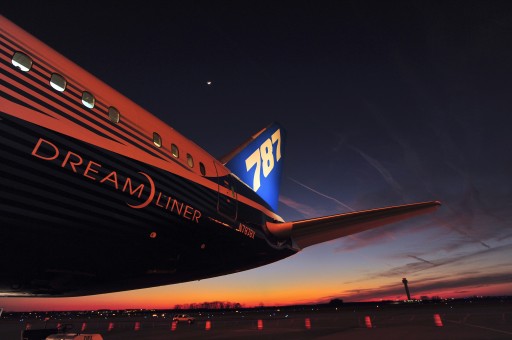 Washington – The head of Federal Aviation Administration says he’s confident the Boeing 787 is safe, but he remains concerned about recent incidents, including a fire and a fuel leak earlier this week.
Washington – The head of Federal Aviation Administration says he’s confident the Boeing 787 is safe, but he remains concerned about recent incidents, including a fire and a fuel leak earlier this week.
Subscribe to our Daily Roundup Email
Michael Huerta, the FAA administrator, said at a news conference Friday that there is nothing in the data the agency has seen to suggest the plane isn’t safe.
FAA also announced it is undertaking a comprehensive review of the 787s critical systems, including design, manufacture and assembly.
The review will include the design, manufacture and assembly of those systems, the FAA said in a statement.
The 787, which Boeing calls the “Dreamliner,” relies more than any other modern airliner on electrical signals to help power nearly everything the plane does. It’s also the first Boeing plane to use rechargeable lithium ion batteries, which charge faster and can be molded to space-saving shapes compared to other airplane batteries. The plane is made with lightweight composite materials instead of aluminum.
A Boeing official said the company is working with the FAA.
“We are absolutely confident in the reliability and performance of the 787,” Boeing spokesman Marc Birtel said. “We are working with the FAA and our customers to ensure we thoroughly understand any introductory issues that arise. While we take each issue seriously, nothing we’ve seen in service causes us to doubt the capabilities of the airplane.”
A fire ignited Monday in the battery pack of an auxiliary power unit of a Japan Airlines 787 empty of passengers as the plane sat on the tarmac at Boston’s Logan International Airport. It took firefighters 40 minutes to put out the blaze. Also this week, a fuel leak delayed a flight from Boston to Tokyo of another Japan Airlines 787.
On Friday, Japan’s All Nippon Airways reported two new cases of problems with the aircraft. ANA spokeswoman Ayumi Kunimatsu said a very small amount of oil was discovered leaking from the left engine of a 787 flight from southern Japan’s Miyazaki airport to Tokyo.
The jet returned to Miyazaki, but after checks found no safety risk it flew to Tokyo. ANA said on another flight, to Matsuyama on the island of Shikoku, glass in a cockpit window cracked and the aircraft was grounded for repairs.
Boeing has insisted that the 787’s problems are no worse than what it experienced when its 777 was new in the mid-1990s. That plane is now one of its top-sellers and is well-liked by airlines.
Boeing has delivered 50 of the 787s, starting in late 2011, and has orders for nearly 800 more. To get through the backlog, Boeing is ramping up production to build 10 787s per month in Washington state and South Carolina by the end of the year.
By comparison, it builds more than one 737, Boeing’s best-seller, every day.
The company said in November that it had begun making five 787s per month. But if any major manufacturing changes are needed to fix the problems, it could fall further behind in deliveries.
